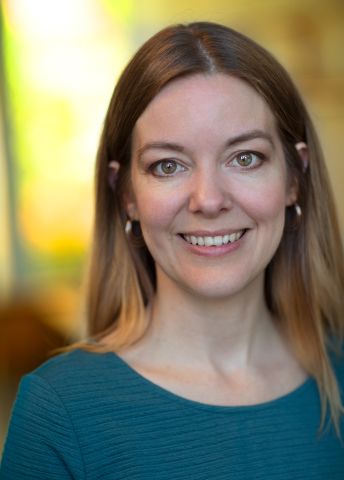
Kimberly Dick Thelander
Professor of Materials Science
Wallenberg Scholar
Institution:
Lund University
Research field:
Nanostructures, crystal growth, semiconductors


Wallenberg Scholar
Institution:
Lund University
Research field:
Nanostructures, crystal growth, semiconductors
When Dick Thelander was chosen as one of the very first Wallenberg Academy Fellows nearly ten years ago, she had only just started her work on designing a new electron microscope. The aim was that she and her colleagues at Lund University would be able to study materials forming spontaneously in real time. This happens at nanoscale, in which the dimensions are only a few billionths of a meter.
The microscope has now been operating for several years, and Dick Thelander uses it to address research issues of increasing complexity.
“The ultimate goal is to design materials and give them specific properties by controlling exactly how their atoms are placed. That’s why I’m studying the processes that govern the placement of atoms in crystals of various kinds. In experimental chemistry and physics, it’s usually the end result that is of interest, not the process. But in this case we can actually see live on the video screen how the crystals are forming. It’s absolutely fascinating.”
At the moment she is studying metastable materials, an intermediate form between stable materials and those that disintegrate spontaneously. Metastability is a fairly common phenomenon and well understood on a theoretical level, but not as much in practice. There is simply not much known about why, when and how metastable materials form in reality.
“In our experiments we change various parameters, such as pressure, temperature and substance concentration, and study what happens. If we systematically fine-tune the processes, we can see trends in what occurs, and formulate a broader theory to describe the processes. When we understand exactly why something happens, we’ll be able to make more general predictions that will be of benefit to other researchers.”
When Dick Thelander started her research she focused mainly on semiconductors. Now she has broadened her field and made multiple discoveries worth pursuing. One example is the significance of the interfaces between two materials, or between phases of one material. They were much more complex and played a greater part in crystal growth than the researchers thought, as they discovered by observing crystal formation under the microscope.
Dick Thelander is conducting pure research into fundamental chemical processes. But her findings may eventually play a part in new electronics, energy storage and energy extraction, for example. She naturally bases her choice of materials to study on those that possess interesting properties, but she stresses that this means properties of interest in the context of pure scientific research, such as whether the surfaces are chemically active in an intriguing way, rather than their utility for a specific purpose.
“But in recent years I’ve increasingly begun to consider materials that have been overlooked. There are numerous crystalline materials were studied in the past because they had potential for different applications, but that were abandoned because it wasn’t possible to control the crystal structures. We might be able to resolve these challenges so that the materials become of interest once more.”
“This system couldn’t have been built without the Foundation. The time scale was too long for me to be able to promise results quickly enough to qualify for other grants. Now we can aim for the best research and the key large-scale scientific challenges.”
Materials research in the past was focused on working with and optimizing materials that were already around. Nowadays there is rapidly growing potential to design structures from scratch, while existing materials have caused problems that no one foresaw a few decades ago. Some resources are running out in nature; others are bad for the climate, or work well on a small scale, but are so much in demand that mass production becomes problematic.
“It’s not quite accurate to say that my team is focusing on sustainable materials. As I say, we’re engaged in pure scientific research. But I do see that sustainability is beginning to be reflected in the substances we choose to study.”
Dick Thelander started out studying chemical physics at the University of Waterloo in Canada. Students had four-month work internships each year, and she still remembers the very first time she had an internship in an academic research lab, at the University of Notre Dame. She and her fellow students were given a tour of the many projects in progress so they could choose one of them.
“One of the researchers was studying nanoparticles of silver and gold. He explained that if they’re small enough, they acquire different properties, and mixed differently. I was so fascinated. I didn’t even know that such a research field existed, that you could design materials. I looked around and thought sure – the other projects look interesting too, but this – this is what I want to do.”
Text Lisa Kirsebom
Translation Maxwell Arding
Photo Magnus Bergström